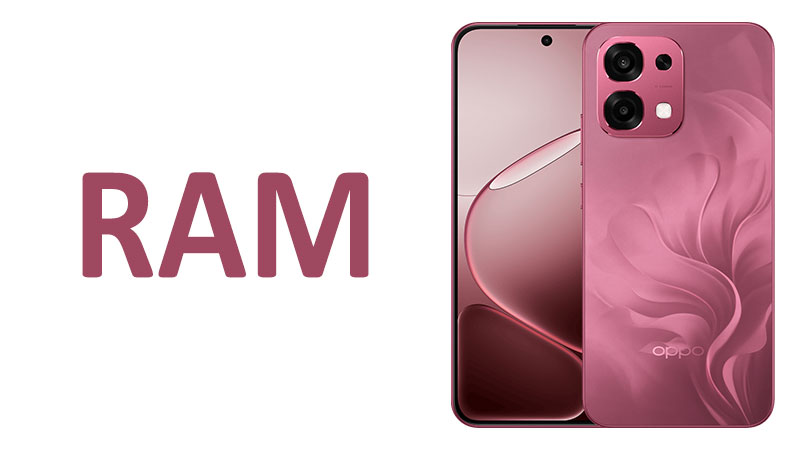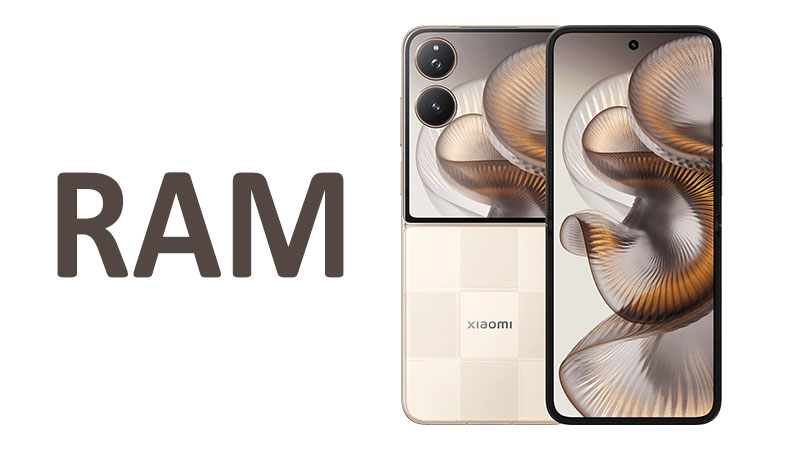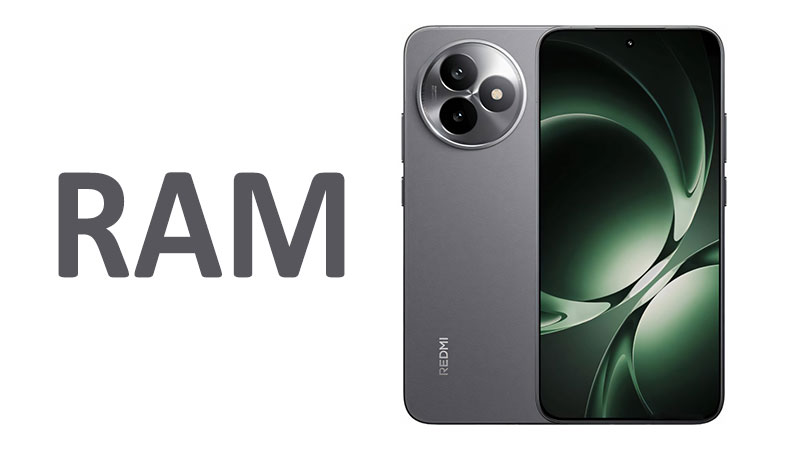The Oppo F31 RAM is a defining feature of this smartphone. It directly influences overall speed and user experience. RAM, or Random Access Memory, serves as the phone’s short-term workspace. It temporarily holds data needed by active applications. A generous RAM capacity ensures seamless performance. This is true even during heavy multitasking sessions. The Oppo F31 simplifies the choice for buyers significantly. It exclusively features a solid 8GB RAM configuration. This is a very smart move by Oppo for its target market. This detailed article explores the single 8GB capacity thoroughly. We will analyze its performance, compare it to rivals, and discuss its multitasking prowess. Understanding this core specification is crucial for any potential buyer.
A Closer Look at the 8GB RAM Capacity
Oppo standardized the F31 with a robust 8GB RAM. This decision places the F31 firmly in the upper mid-range category. Eight gigabytes is considered an excellent amount of memory today. It successfully balances cost and high performance for users. This capacity is more than adequate for most contemporary demands. It ensures the phone runs smoothly across various daily activities. The single capacity simplifies the purchasing decision for consumers greatly. They do not need to worry about complex tier comparisons.
The 8GB Memory Standard
Eight gigabytes of RAM is now the common standard for quality smartphones. It moves beyond the limitations of older 6GB base models. This increase offers substantial headroom for application activity. It prevents the operating system from aggressively shutting down background apps. For instance, you can switch between several demanding tasks easily. You will experience no noticeable lag or stuttering. This large memory pool is a key performance indicator. It assures users of consistent, fast responsiveness.
Configuration Breakdown and Storage Pairing
The Oppo F31 RAM is offered in only one capacity: 8GB. This memory is paired with two available internal storage sizes. The base model features 128GB of internal storage with 8GB RAM. A step-up model offers 256GB of storage, also paired with 8GB RAM. These configurations offer buyers storage flexibility. They can choose the necessary space without worrying about memory tiers. The consistent 8GB RAM ensures that performance remains identical across both models. This simplifies the buyer’s choice considerably. They only need to decide on the required storage capacity.
Distinguishing RAM from Internal Storage
It is very important to clearly understand the difference between RAM and storage. RAM is volatile, or temporary, high-speed memory. It holds data only while the phone is actively using it. Internal storage is permanent memory for files, photos, and apps. The 8GB RAM capacity dictates the phone’s immediate speed. The 128GB or 256GB storage dictates how many files you can keep. Both memory types are essential for overall user experience. The 8GB RAM capacity successfully complements the generous storage options.
RAM as a Buffer for the Processor
The RAM serves as a necessary, high-speed buffer for the processor. When you open an app, the system loads its data into the RAM instantly. The processor then accesses this data at an extremely fast rate. This prevents the processor from accessing the slower internal storage directly. The 8GB buffer means the processor always receives data quickly. This contributes directly to the phone’s overall fluid performance. A large RAM buffer is critical for executing complex instructions quickly.
Performance Deep Dive: Speed and Multitasking
The 8GB Oppo F31 RAM capacity delivers excellent real-world performance results. It handles typical mobile computing tasks with impressive speed and efficiency. The large memory pool is particularly effective for heavy multitasking activities. The phone rarely struggles to keep up with user demands. Oppo’s ColorOS software is also highly optimized. This optimization works perfectly with the 8GB of physical memory.
The Role of 8GB in Everyday Fluidity
Daily tasks run with remarkable smoothness thanks to the 8GB RAM. These tasks include web browsing, checking social media, and streaming video. Apps launch quickly and run without any noticeable hitches. Navigating between menus and home screens is perfectly fluid. The system uses the 8GB capacity to predict memory needs. It preemptively loads essential system components into the memory. This proactive approach ensures instantaneous system response times. Users experience a premium, high-speed interaction daily.
Gaming Performance Analysis
The Oppo F31’s 8GB RAM handles popular mobile games very well. Most modern titles run smoothly without any major issues. Games with demanding graphics require significant memory resources actively. The 8GB capacity successfully accommodates these high requirements. It ensures fast loading times for game assets and textures. For example, battle royale games and racing simulations perform reliably. Dedicated mobile gamers will find the 8GB capacity more than acceptable. However, extreme, competitive mobile players might seek even higher memory capacity.
Efficiency and Application Retention
Application retention is a major strength of the 8GB RAM. This refers to the phone’s ability to keep many apps running in the background. With 8GB, the phone can typically hold five to eight medium-sized apps active. Users can switch between a browser, a music app, and a complex utility instantly. The app resumes exactly where they left it, with no reloading delay. This seamless transition is fundamental for efficient multitasking. It saves the user time and reduces unnecessary frustration greatly.
Impact on Media Processing
Media consumption and creation tasks also benefit significantly from the 8GB RAM. Editing photos or rendering short videos requires a substantial memory buffer. The RAM holds the large media file and the editing software simultaneously. This speeds up rendering times and enhances the editing experience. Streaming high-resolution video is also flawless. The phone uses the 8GB memory to buffer content effectively. This prevents annoying buffering pauses or video stutters during playback.
Understanding the RAM Technology
The Oppo F31’s performance is also driven by the underlying memory technology. RAM speed is just as crucial as its overall capacity. Oppo likely uses a fast, modern LPDDR standard in the F31. This technology ensures the 8GB capacity is utilized with maximum efficiency and speed. Understanding this technology provides context for the phone’s actual performance.
Likely LPDDR Memory Standard
The Oppo F31 likely features LPDDR4X RAM technology. LPDDR stands for Low-Power Double Data Rate. The “4X” suffix indicates a very fast and power-efficient standard. LPDDR4X is widely used in the upper mid-range segment for good reason. It provides excellent data transfer speeds efficiently. This standard successfully balances high performance with necessary energy conservation. This memory type helps the phone maintain impressive battery life. It also ensures the processor has instant data access at all times.
Speed and Data Throughput
The LPDDR4X standard provides very high data throughput rates. This speed measures how quickly information can move into and out of the 8GB RAM module. Fast throughput is critical for rapid application performance. It allows the processor to execute complex tasks without unnecessary waiting. This speed is noticeable every time you open a large app. It also speeds up the entire system boot process. High throughput is the real engine behind the phone’s quick response time.
Virtual RAM and Software Optimization
Oppo enhances the 8GB physical RAM with a Virtual RAM feature. This feature is often marketed as RAM Expansion technology. It uses a portion of the fast internal storage as auxiliary memory space. For example, it can allocate up to 5GB of storage as virtual RAM temporarily. This creates an effective memory capacity of up to 13GB in total. This temporary expansion is vital for handling unexpected memory spikes. It ensures that the 8GB phone never struggles with a heavy, sudden load. This software optimization is a major benefit of Oppo’s ColorOS.
ColorOS Memory Management
Oppo’s custom operating system, ColorOS, plays a key role in memory management. It includes intelligent algorithms that constantly monitor app memory usage. ColorOS can prioritize resources for the current foreground application perfectly. It efficiently manages background processes to prevent resource wastage. This smart software ensures the 8GB of RAM is used with maximum efficiency. The tight integration between software and hardware contributes to the phone’s famous fluidity. Users benefit from Oppo’s constant software refinements.
Oppo F31 RAM: Market Comparison
The 8GB RAM capacity places the Oppo F31 competitively in its market segment. Comparing this specification against its predecessor and current rivals is illuminating. This comparison shows why 8GB is the optimal choice for the F31 series. It validates the phone’s position in the crowded mid-range market.
Versus Previous Oppo F-Series Models
Previous generations of the Oppo F-series often started with lower RAM capacities. For example, older models might have featured 4GB or 6GB of RAM as standard. The move to a base 8GB RAM in the Oppo F31 is a significant upgrade. This higher baseline provides a much better experience for modern users. It ensures the F31 easily handles the latest, memory-intensive applications. This upgrade is essential for maintaining a fast and responsive feeling over time. Oppo clearly prioritizes performance in the F31.
Against Key Mid-Range Competitors
The Oppo F31 competes directly with models from Samsung and Xiaomi in the mid-range. Many of these rival devices offer 6GB RAM as their true standard base model. They often charge extra for the 8GB RAM variant. Oppo providing 8GB RAM as standard offers a clear value proposition. It gives the F31 an immediate performance edge over cheaper rivals. This capacity matches the best offerings in its class easily. The F31 ensures it stands out in terms of core specifications.
The Mid-Range Sweet Spot
The 8GB RAM capacity represents the ideal “sweet spot” for the mid-range market. It offers nearly all the performance benefits of 12GB RAM without the extra cost. This is because most mobile applications are still highly optimized for 8GB or less. Therefore, paying for 12GB or 16GB yields diminishing returns for most users. Oppo’s choice of 8GB offers the best cost-to-performance balance. It provides a premium, fast experience at a more accessible price point. This strategic choice maximizes the F31’s market appeal greatly.
Software Optimization Advantage
Oppo’s ColorOS has a reputation for efficient performance optimization. This efficiency can sometimes make 8GB of RAM perform like a higher capacity in rivals. The tight integration of the operating system with the hardware is key. This optimization ensures that every megabyte of the 8GB RAM is used effectively. Other phones with less optimized software may require 10GB to achieve similar performance. Oppo leverages software to enhance the physical memory limit successfully.
Pros and Cons of the 8GB RAM Strategy
The Oppo F31’s reliance on a single 8GB RAM capacity has many distinct advantages. However, it also presents a few minor limitations for specific user types. A balanced look at these pros and cons is necessary for a complete review. This assessment helps potential buyers set realistic performance expectations.
Advantages for the Average User
Excellent Multitasking: The 8GB capacity easily supports running numerous apps at once. Users experience quick, fluid switching between tasks seamlessly. This greatly improves daily efficiency.
Strong Gaming Stability: Most popular mobile games run reliably and smoothly on 8GB RAM. The memory provides a stable platform for intense graphics processing. This ensures a consistent, enjoyable gaming experience.
Cost-Effective Performance: Standardizing the 8GB RAM helps keep the overall phone cost down. It provides high-end performance without demanding a flagship price tag. This maximizes the device’s value.
Sufficient Future-Proofing: Eight gigabytes is sufficient for the next two to three years of software updates. It offers good protection against increasing application memory demands. The phone will remain fast for a long time.
Limitations for Extreme Power Users
Potential for Reloader Fatigue: Extreme power users might occasionally hit the memory limit. This occurs when they run dozens of heavy apps, professional tools, and background services simultaneously. They might experience some slight app reloading.
Not the Absolute Maximum: The F31 is not designed for users seeking the very highest specifications. Users who demand 12GB or 16GB will need to look at Oppo’s Find X series. The 8GB is a compromise for the highest-end users.
Less Headroom for Virtual Machines: Running highly specialized tasks, like virtual desktop environments, requires maximum RAM. The 8GB capacity is generally unsuitable for these extreme niche workloads. It is optimized for everyday mobile use.
The Value of Consistent Performance
The 8GB standard guarantees consistent performance across all F31 models. Buyers know exactly what level of speed they purchase. There is no confusion or uncertainty about performance variability. This consistency builds user confidence in the F31 product line. It ensures a reliably fast experience for everyone. This stability is a key selling point for Oppo.
Key Considerations for Potential Buyers
Potential buyers of the Oppo F31 must consider how the 8GB RAM fits their lifestyle. While 8GB is excellent, a few key points are important for an informed decision. These factors relate to usage patterns, software features, and related hardware components. They all contribute to the final perception of performance.
Assessing Your Usage Profile
Examine your typical smartphone usage habits carefully. Do you usually open and close apps one by one, or do you leave many open? If you are a standard user who manages apps, 8GB is perfect. If you are an aggressive power user who never closes apps, you might push the 8GB limit. For the majority of people, 8GB provides more memory than they will ever fully utilize. Match the memory to your personal usage demands accurately.
Importance of Fast Storage Technology
The speed of the internal storage is another crucial factor. Oppo pairs the 8GB RAM with a fast UFS storage standard. UFS stands for Universal Flash Storage. This fast storage technology is essential for quick app loading and data transfer. If the storage were slow, the 8GB RAM would be bottlenecked. The fast storage allows the phone to quickly swap data when needed. This partnership ensures maximum utilization of the 8GB memory. Buyers should confirm the use of a modern UFS standard like UFS 2.2 or better.
Utilizing Software Memory Expansion
Remember to factor in Oppo’s Virtual RAM technology. This feature can add several gigabytes of temporary memory virtually. It acts as an excellent performance safety net for the 8GB capacity. Users should learn how to enable and manage this RAM expansion setting. Utilizing this software feature effectively maximizes the phone’s overall multitasking potential. It allows the 8GB model to handle peak loads like a 12GB device temporarily.
The Overall Oppo Ecosystem
The performance of the 8GB RAM is also influenced by the wider ecosystem. Oppo optimizes the phone for its specific chip and its ColorOS system. This optimization often yields better real-world results than a rival with the same hardware. The integrated software prevents unnecessary background memory usage effectively. Therefore, the 8GB RAM in the Oppo F31 performs exceptionally well. It is specifically tuned for its unique hardware configuration.
Conclusion
The Oppo F31 RAM configuration, standardized at 8GB, is a highly strategic choice. It firmly establishes the phone as an excellent performer in the upper mid-range segment. The 8GB capacity offers a phenomenal balance of power, speed, and cost-effectiveness. It uses a modern LPDDR standard. This ensures both high-speed data throughput and great energy efficiency. The phone successfully handles demanding mobile games and heavy daily multitasking effortlessly.
Furthermore, Oppo enhances the physical 8GB RAM with its effective Virtual RAM feature. This gives the user additional performance headroom when needed most. The 8GB is more than sufficient for the vast majority of smartphone users today. It successfully provides a fast, stable, and smooth user experience daily. Buyers seeking a reliable, high-performing device at a reasonable price should choose the Oppo F31. The 8GB RAM is the perfect, necessary foundation for its overall success. It delivers exactly the right amount of memory for this market segment.
FAQ
What is the exact RAM capacity of the Oppo F31?
The Oppo F31 comes with a single, highly capable 8GB of RAM across all models.
Does the Oppo F31 RAM support demanding mobile gaming?
Yes. The 8GB RAM is fully sufficient for smooth and reliable performance in almost all popular mobile games.
Does Oppo F31 have a virtual RAM expansion feature?
Yes. Oppo’s ColorOS includes a feature that can allocate internal storage as temporary virtual RAM.
How does 8GB RAM affect the phone’s long-term performance?
Eight gigabytes provides good future-proofing. It allows the phone to manage increasing memory demands for several years.
What storage configurations are paired with the 8GB RAM?
The 8GB RAM is paired with both the 128GB and the 256GB internal storage configurations.



